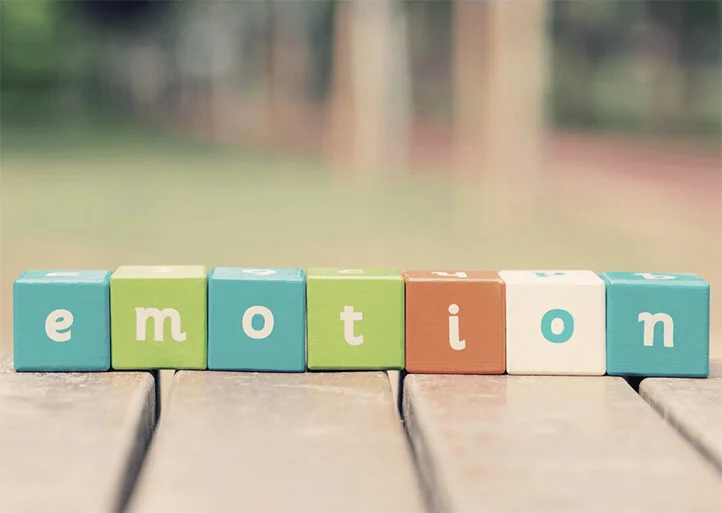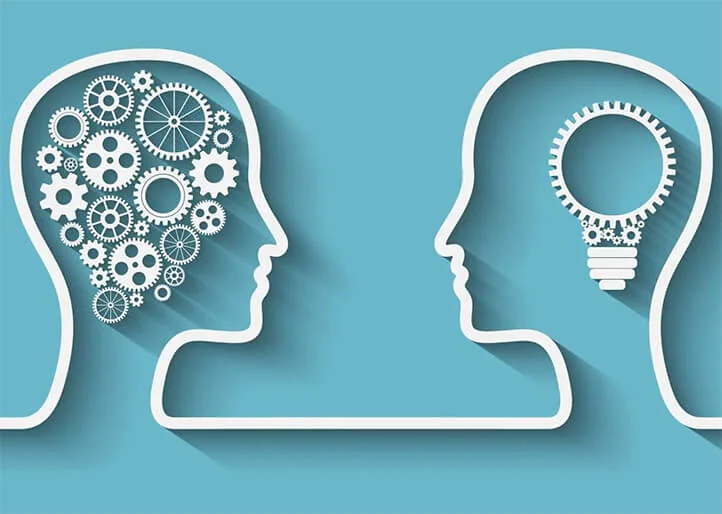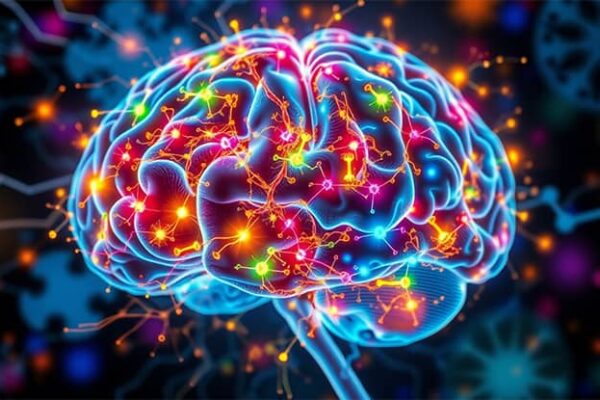Emotion is a complex psychophysiological state that reflects an individual’s personal response to a specific situation, object, or phenomenon. Emotions can be positive (joy, delight), negative (sadness, fear, anger), or mixed (anxiety, nostalgia) and can influence our thinking, behavior, and perception of the world around us.
Each of us has at some point wondered, “What are emotions?”, learned to identify our own feelings, and taken into account the emotions of others in our actions and decisions. It is through emotions that we can deeply feel sorrow, love, disappointment, fear, and more. Emotions make us sensitive to the world around us and play a crucial role in social connections, helping us better understand each other.

The Role of Emotions in Human Life
- Evaluative Role: Emotions help individuals assess situations. If a person feels joy, it indicates that the situation aligns with their interests or needs. On the other hand, fear or anger signals a potential threat or a conflict of interests.
- Motivational Role: Emotions can stimulate or inhibit actions. Fear may trigger flight, while joy can create a desire to share happiness with others.
- Adaptive Function: Emotions aid in adapting to changing conditions. They can intensify or diminish responses to stimuli, preparing us for specific behaviors.
- Social Role: Emotions are crucial in interpersonal relationships. They help us express our feelings and understand the emotions of others, facilitating effective communication and socialization.
- Cognitive Role: Emotions influence perception, attention, memory, and thinking processes. For instance, a joyful person is more likely to remember positive information.
- Protective Function: Emotions such as fear often act as a defense mechanism, warning of potential danger and preparing an individual for a “fight or flight” response.

The Importance of Understanding and Classifying One’s Emotions
Understanding and classifying one’s emotions play a significant role in personal and social development. Here are several reasons why this is so important:
- Self-Knowledge and Introspection: Awareness and understanding of one’s emotions help individuals better comprehend their needs, desires, and boundaries, fostering personal growth and self-development.
- Emotional Regulation: Understanding one’s emotions is the first step towards effectively controlling them. When a person recognizes what they are feeling, they can better respond to emotional challenges and develop stress management strategies.
- Improvement of Interpersonal Relationships: Understanding one’s emotions aids in communication with others, as individuals become more attuned to their reactions and better at expressing their feelings.
- Decision-Making: Awareness of one’s emotions contributes to making more thoughtful decisions.
- Health and Well-Being: Accumulated and suppressed emotions lead to stress and psychological issues. Understanding and acknowledging emotions promotes emotional health.
- Development of Empathy: Understanding one’s emotions allows a person to empathize and understand the emotions of others.
- Orientation in the Emotional World: Classification helps in distinguishing and naming one’s feelings, making them less abstract and vague.
- Deeper Understanding: By knowing different categories of emotions, a person can better understand their origins, functions, and connections to other feelings.
- Educational and Therapeutic Significance: In psychotherapy and education, the classification of emotions is used to teach people how to recognize and manage their feelings.

Key Theories of Emotions
Emotions are a fundamental part of the human experience, influencing our behavior, thinking, and perception of the world. They serve as a bridge between our internal experiences and external reality, playing a crucial role in how we respond to various events and interact with others.
Scientists have developed and continue to develop various theories in an attempt to explain what emotions are, their nature, and origin. Understanding these theories helps us better grasp how our emotional responses are formed and how they impact our lives.
James-Lange Theory
The James-Lange theory is one of the most well-known concepts in the study of emotions. Its central idea is that physiological reactions of our body to various stimuli lead to the emergence of emotions.
According to this theory, when a person encounters a specific stimulus (e.g., a threat), their body responds with certain physiological changes (e.g., increased heart rate, dilated pupils). These physiological reactions are recognized by the brain, which in turn interprets them as a specific emotion (in this case, fear).
William James and Carl Lange believed that emotions are not the cause of physiological reactions but rather the consequence of them. For example, we do not run from danger because we feel fear; we feel fear because our body reacts to the threat (e.g., by increasing the heart rate).
This theory has been the subject of much debate and criticism, and over time, many other approaches to understanding the nature of emotions have been proposed. Nevertheless, the James-Lange concept remains a cornerstone in the history of emotion studies and continues to inspire modern researchers in this field.
Cannon-Bard Theory
The Cannon-Bard theory, developed as an alternative to the James-Lange theory, represents another significant perspective on the origin and nature of emotions.
According to this theory, when we encounter an emotional stimulus, the information is sent to the brain, where two things happen simultaneously: first, an emotional experience (e.g., fear) occurs, and second, a physiological response (e.g., increased heart rate) is triggered. These two processes occur in parallel and independently of each other.
Thus, unlike the James-Lange theory, the Cannon-Bard theory asserts that physiological reactions do not lead to the emergence of emotions. Rather, both are parallel outcomes of the activation of specific parts of the brain in response to a stimulus.
This concept is significant because it emphasizes the independence of emotional experiences from the physical reactions of our bodies. The Cannon-Bard theory has formed the basis for many subsequent studies in the psychology of emotions and remains central to this discipline.
Cognitive Theories of Emotions
Cognitive theories of emotions argue that thinking or cognitive appraisal is an integral part of the emotional experience. Unlike other theories that focus on physiological reactions or sensations, cognitive approaches emphasize the role of interpretation and evaluation of a situation in the formation of emotions.
The main premise of cognitive theories is that before a person experiences a specific emotion, they first interpret or evaluate the situation. This evaluation can happen quickly and automatically or may require more profound reflection. For example, if someone is yelling at you, your first, automatic interpretation might be, “They are angry at me,” which would trigger feelings of hurt, fear, or anger. However, further reflection might lead to the conclusion that the person just had a bad day, which would likely soften your initial emotional response.
Thus, cognitive theories highlight that our emotions are not merely reactions to external stimuli or internal physiological processes but also the result of understanding and interpreting events. This premise paves the way for various psychotherapy techniques aimed at altering cognitive appraisals to manage emotional responses.

Types of Emotions: Main Categories
For centuries, philosophers, psychologists, and researchers have attempted to categorize and define the complex emotional sphere of human experience. While emotions can feel immediate and unique, scholars have identified several key categories that help systematize and better understand this complex and multifaceted spectrum of experiences.
Identifying the main categories of emotions allows us not only to better understand our internal states but also to interact effectively with the world around us. By breaking emotions down into categories, we can more clearly define their origins, functions, and ways of manifestation in various contexts. Awareness of these categories provides tools for better self-understanding, emotional regulation, and building harmonious relationships.
Positive Emotions
Positive emotions are a broad range of feelings and experiences that bring a person satisfaction, joy, and well-being. They play a key role in our overall well-being, motivation, pursuit of achievement, and ability to recover from difficulties.
Positive emotions broaden our psychological perspective, allowing us to see more opportunities, be more open to new experiences, and strive for personal growth. They also contribute to strengthening social bonds, community, and cooperation.
The most well-known positive emotions include joy, gratitude, interest, hope, exhilaration, and love. Each has its own characteristics and functions, but overall, they contribute to creating a happy life, a positive perception of oneself, and the surrounding world.
- Joy
Characteristics: A pleasant feeling of satisfaction and well-being.
Functions: Stimulates us to repeat positive actions, strengthens social bonds, and fosters creativity. - Gratitude
Characteristics: Recognition and appreciation of kindness or support received from others.
Functions: Strengthens social bonds, fosters a positive perception of others, and promotes altruistic actions. - Interest
Characteristics: A positive and curious attitude toward something new or unexplored.
Functions: Promotes learning and exploration, deepens understanding, and motivates growth and enrichment of experience. - Hope
Characteristics: Expectation of a better future, even in challenging circumstances.
Functions: Supports resilience and determination in difficult situations, motivates action toward desired changes, and helps cope with difficulties. - Exhilaration
Characteristics: An intense and effective feeling of pleasure or joy, often caused by unexpected or particularly pleasant events.
Functions: Enhances memories of positive experiences, can strengthen social bonds, and creates especially vivid moments of well-being. - Love
Characteristics: A deep emotional attachment and care for another person, often combined with physical attraction.
Functions: Strengthens interpersonal relationships, promotes psychological safety, and can stimulate cooperation and mutual support between people.
Negative Emotions
Although negative emotions can cause discomfort or painful feelings, they play an important role in adaptive processes and human survival. They serve as signals indicating potential threats, problems, or conflicts that require attention and resolution.
- Fear
Characteristics: A response to perceived threat or danger.
Functions: Motivates avoidance of danger and self-defense, activates the “fight or flight” response. - Anger
Characteristics: A response to perceived injustice, threat, or blockage of goals.
Functions: Motivates action to restore justice or remove obstacles. - Sadness
Characteristics: A response to loss, disappointment, or failure.
Functions: Promotes reflection, adaptation, and acceptance of changes or losses. - Disgust
Characteristics: A reaction to something perceived as unpleasant or harmful.
Functions: Protects from potentially harmful substances or situations. - Envy
Characteristics: An unpleasant feeling in response to someone else’s well-being or success.
Functions: Can motivate achievement or competition. - Anxiety
Characteristics: A feeling of worry or tension due to upcoming events or uncertainty.
Functions: Stimulates preparation for potential threats or problems.
Mixed Emotions
Mixed emotions represent the experience of two or more emotions simultaneously or alternately concerning the same object, situation, or event. These emotions can be complex and ambiguous, but they reflect a deep human capacity for detailed emotional perception.
- Sentimentality
Characteristics: An emotional state characterized by heightened sensitivity to emotional stimuli, including memories, works of art, or life situations, often with a touch of tenderness, poignancy, or sadness.
Functions: Allows individuals to more deeply experience and appreciate moments in life, deepening emotional connections with the world and others. Sentimentality can stimulate creative expression and aid in the process of reflection and self-discovery. - Worry
Characteristics: An emotional and physical state characterized by a feeling of concern, anxiety, and anticipation, often in the lead-up to an important event or unknown situation.
Functions: Stimulates the body’s readiness for action, increases focus and concentration on the upcoming task, can motivate decisive actions or problem-solving, and signals potential threats or the importance of a situation. - Nostalgia
Characteristics: An emotional state combining joy and sadness from memories of the past, which can be triggered by places, melodies, scents, or people.
Functions: Helps individuals strengthen their connection to the past, stimulates the desire to recreate certain moments or experiences, and can enhance social bonds when sharing these memories. - Lability
Characteristics: An emotional state characterized by sharp and frequent fluctuations between different feelings and moods, from joy to sadness, from calm to irritability.
Functions: Reflects an individual’s heightened sensitivity to external stimuli or internal experiences, can signal psychological instability or stress, and motivate the search for causes of such variability and their resolution. - Empathy
Characteristics: The ability to understand and share another person’s feelings, putting oneself in their place, and empathizing with their experiences, whether joy, sadness, or pain.
Functions: Strengthens interpersonal connections and social interaction, allowing better understanding and support of each other. Empathy also motivates helping and cooperation, facilitates conflict resolution, and deepens relationships on an emotional level.

Classification of Emotions
Emotions are an integral part of the human experience, shaping our responses to the world around us and determining the quality of our interpersonal relationships. They serve as invisible threads connecting our memories, desires, and actions.
Throughout different eras and cultures, emotions have been viewed differently, and many scholars have attempted to classify them. Understanding and categorizing emotions not only deepen our knowledge of the human psyche but also provide people with tools for better understanding themselves and the world around them.
Each attempt at classification seeks to answer the question “what kinds of emotions are there” and to identify the common and distinctive characteristics of various feelings and states. This process of organizing and studying experiences continues today, affirming the inexhaustible diversity of the emotional world of humans.
Intensity
Emotions can be classified based on their intensity, which allows for distinguishing between superficial, moderate, and deep experiences. This basis for classification is often used to determine the strength of an emotional response and its impact on behavior and perception.
- Superficial emotions often arise in response to everyday events or stimuli. They may be short-lived and less intense. For example, brief irritation due to a minor misunderstanding or joy from receiving a compliment.
- Moderate emotions fall between superficial and deep feelings and usually result from situations that have some, but not extreme, significance to us. For example, satisfaction from completing a task or anxiety before an important event.
- Deep emotions are more intense and long-lasting. They may arise in response to significant events or deep reflections, often associated with life changes or meaningful memories. Examples include deep longing for a lost loved one or overwhelming love.
Duration
Emotions can also be classified based on their duration. This parameter helps understand how long a particular feeling may persist and what impact it can have on a person’s psychological state and behavior.
- Instantaneous emotions. These feelings arise suddenly in response to a specific stimulus or situation and quickly pass. For example, a burst of joy from unexpected praise or instant irritation due to a failure.
- Short-term emotions. These emotions may last for several hours or even days. They are often related to specific events or circumstances, such as joy after successfully passing an exam or sadness after a conflict with a friend.
- Long-term emotions. These feelings can persist for weeks, months, or even years. They are often associated with profound life events or experiences, such as mourning after the loss of a loved one or long-lasting satisfaction with a chosen profession.

Cultural Differences in the Perception and Expression of Emotions
Cultural features play a key role in how people perceive, interpret, and express their emotions. These differences can manifest both in the emotional reaction to certain events and in the ways feelings are expressed.
- Perception of emotions. In different cultures, the same events can evoke different emotions. For example, in some Eastern cultures, restraint and calmness are valued more than the open display of joy or sorrow.
- Expression of emotions. While in some cultures, direct and open expression of feelings is considered the norm, in others, it may be inappropriate or even rude. For example, in Japan, a restrained facial expression is often used to demonstrate respect for others, while in Latin American cultures, emotions of respect are often expressed brightly and openly.
- Etiquette and social norms. In some cultures, certain emotions, such as anger or sadness, may be suppressed due to social norms and expectations. This is often related to the desire to maintain harmony in society or avoid conflicts.
- Meaning and interpretation of emotions. The understanding and interpretation of emotions can also vary depending on the culture. In some cultures, feelings may be associated with religious or spiritual teachings, while in others, they are linked to personal or social standards.
Understanding cultural differences in the perception and expression of emotions is critically important, especially in multinational and multicultural societies. It helps avoid misunderstandings and conflicts and also assists in adaptation and interaction in various cultural contexts.

Emotional Intelligence
Emotional intelligence is the ability to recognize, understand, and manage one’s own emotions, as well as the ability to interpret and interact with the emotions of others. This concept has gained significant popularity in recent decades, thanks to the work of scholars like Daniel Goleman.
The importance of emotional intelligence:
- Interpersonal Relationships: Well-developed emotional intelligence enables individuals to better interact with others, understand their needs, feelings, and motives. This fosters the establishment of deeper and healthier relationships.
- Decision-Making: Awareness of one’s own emotions and feelings, as well as those of others, helps in making more thoughtful and rational decisions, rather than impulsive or purely emotional ones.
- Stress Resilience: People with high emotional intelligence are better at coping with stress because they can recognize its signs earlier and use various strategies to manage it.
- Leadership: Leaders with emotional intelligence can better motivate their teams, understand their needs, and resolve conflicts more constructively.
- Self-Regulation: Reasonable expression of emotions helps avoid the negative consequences associated with inappropriate reactions to stressful situations or conflicts.
Thus, emotional intelligence is not just a trendy concept in psychology; it is a key element of successful social interaction, professional growth, and personal well-being.
Developing Emotional Intelligence
The development of the ability to recognize and manage one’s own emotions, as well as the emotions of others, is an essential aspect of personal growth. It contributes to improved interpersonal relationships, professional effectiveness, and overall quality of life. Here are some steps and methods that can help in developing emotional intelligence:
- Self-Observation: Start with introspection. Ask yourself what emotions you feel in different situations and why. Keeping an emotion journal can be helpful.
- Meditation and Mindfulness: Practicing meditation or mindfulness allows you to monitor your emotions and your body’s reactions to them.
- Learning Emotional Intelligence: Read books, articles, or take courses on developing emotional intelligence to understand the theoretical foundations and gain practical tools.
- Feedback: Ask close friends or colleagues to share their perspective on how you express your emotions and respond to the feelings of others.
- Active Listening Skills: Listen to others without bias or the urge to interrupt. This will help you better understand their emotions and feelings.
- Empathy: Try to put yourself in the other person’s shoes to feel their experiences. This will help you develop a deeper understanding of human emotions.
- Stress Management: Learn and apply various relaxation and stress management techniques.
- Professional Help: If you have serious difficulties with managing your emotions, it is recommended to seek help from a psychologist or psychotherapist.

Physiological and Psychological Aspects of Emotions
To understand the nature of emotions, it is essential to consider two main aspects: physiological and psychological.
From a physiological standpoint, emotions manifest through various bodily reactions. These can include an accelerated heartbeat due to fear or a rush of blood to the face in moments of shame. Such reactions result from a complex interplay between the brain, nervous system, and other parts of the body.
The psychological aspect of emotions, on the other hand, is connected to our thoughts, perceptions, and mental processes. This includes how we interpret and understand our feelings and how they influence our behavior, motivation, and interactions with others. Therefore, a comprehensive understanding of emotions requires an in-depth study of both these areas.
How Does the Body React to Different Emotions?
The body responds to emotions through various physiological changes, which often serve as protective reactions, preparing us to act in response to different external stimuli. Here are detailed examples:
- Joy:
- Improved mood and energy levels.
- Relaxation of muscles.
- Increased production of endorphins (happiness hormones).
- Frequent and deep breathing.
- Fear:
- Accelerated heartbeat.
- Dilated pupils.
- Sweating.
- Trembling or shivering.
- Muscle tension, preparing for flight or resistance.
- Anger:
- Facial redness.
- Accelerated breathing.
- Tension in the neck and jaw.
- Elevated adrenaline levels in the blood.
- Sadness:
- Reduced energy levels.
- Slower breathing and pulse.
- A feeling of heaviness in the chest or stomach.
- Decreased appetite or, conversely, a feeling of hunger.
- Love and Attachment:
- Increased production of oxytocin (the love hormone).
- Lowered blood pressure.
- Relaxation and a sense of comfort.
- Accelerated heartbeat when near the object of affection.
- Disgust:
- Stomach spasms.
- A queasy feeling in the abdomen.
- A desire to withdraw or distance oneself from the source of disgust.
- Surprise:
- Dilated pupils.
- Stupor.
- Instant tension or readiness to react.
The Connection Between Thinking and Emotions
To understand the nature of emotions, it is also important to explore the relationship between emotions and thinking, which is crucial in psychology and psychotherapy. Our thoughts and beliefs often determine how we react to various situations, which in turn shapes our emotional state.
- The Influence of Thoughts on Emotions: Our beliefs, evaluations, and interpretations of events play a central role in determining the emotions we experience. For instance, if you think after failing an exam, “I never succeed on the first try,” it is likely to cause sadness or despair. However, if you think, “That exam was really tough, but I can try again,” it may bring you hope or a sense of determination.
- Feedback Loop: Emotions, in turn, can affect our ability to think clearly and objectively. When we experience strong emotions such as anger or fear, the brain tends to focus on certain aspects of a situation while ignoring others, which can sometimes lead to cognitive distortions.
- Bodily Reactions: The body reacts with various physiological changes to our thoughts and perceptions. For example, the thought of an upcoming public speech may cause sweating, rapid breathing, and a racing heart.
- Management Tools: Understanding the connection between thinking and emotions provides us with tools for managing our feelings. By recognizing how thoughts influence emotions, we can start working on changing negative or distorted beliefs, which can help in better coping with emotional challenges.

Summary and Conclusions
In a world where we are often taught to control and conceal our emotions, openly acknowledging them can be a challenging task. However, understanding and recognizing our emotions are crucial factors for maintaining mental health, while ignoring or suppressing them can lead to stress, anxiety, and even depression.
Reflecting on the question of “what emotions are,” we begin to realize that each one plays a vital role in our lives. They serve as important indicators of our inner state, helping us understand what we truly feel in response to various events and circumstances. Emotions also act as signals, pointing to areas in our lives that may need change.
Acknowledging our feelings and emotions also helps us form deep and sincere relationships, provides opportunities for self-reflection and personal growth. Moreover, by understanding and accepting our emotions, we are better equipped to handle negative situations, avoiding chronic stress and its impact on mental health.




